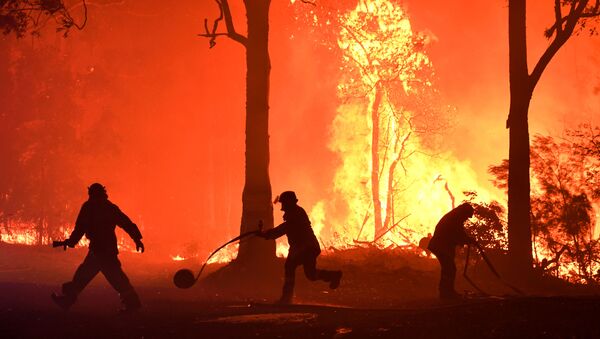"In recent days up to the cool change, the fires had been a potential threat to supply and assets, particularly in Warragamba and in the Blue Mountains," a spokesperson for the Australian state of New South Wales’ water authority, WaterNSW, told Reuters. WaterNSW supplies about 60% of untreated water to the state’s water utilities, which then treat the water to make it drinkable.
"With the coming very hot conditions the fire situation may escalate in both those fronts and possibly elsewhere,” the spokesperson added. So far, however, none of the infrastructure in New South Wales has been damaged, although large amounts of ash could decrease the water quality in the dams if the “fires are followed by heavy rain,” the New York Times reports.
Even though temperatures cooled slightly in New South Wales over Christmas, they are expected to spike back up to 40 degrees Celsius next week, likely causing fires near Warragamba Dam, which provides water to 80% of Sydney’s residents, the Times reports. The dam is only at around 45% capacity, even though it was almost at 100% capacity less than three years ago before long periods of drought affected its water supply.
So far, there have been eight deaths caused by the blazes, which have been raging across Australia since September. According to multiple reports, at least 3 million hectares of land and around 700 homes have been burned down in the last few months.
Although fires are common in Australia, this year’s blazes have been particularly intense, with more people than usual showing up at hospitals and medical centers due to breathing issues, according to government health officials, AFP reported.
According to an AP report published this month, the air pollution in some parts of Sydney was 11 times worse than a 200 reading on the Air Quality Index, the threshold considered “hazardous,” due to fine particulate matter being released by the burning fires. Fine particulate matter consists of microscopic solids and liquid droplets in the air that can be inhaled and even absorbed by the bloodstream.



